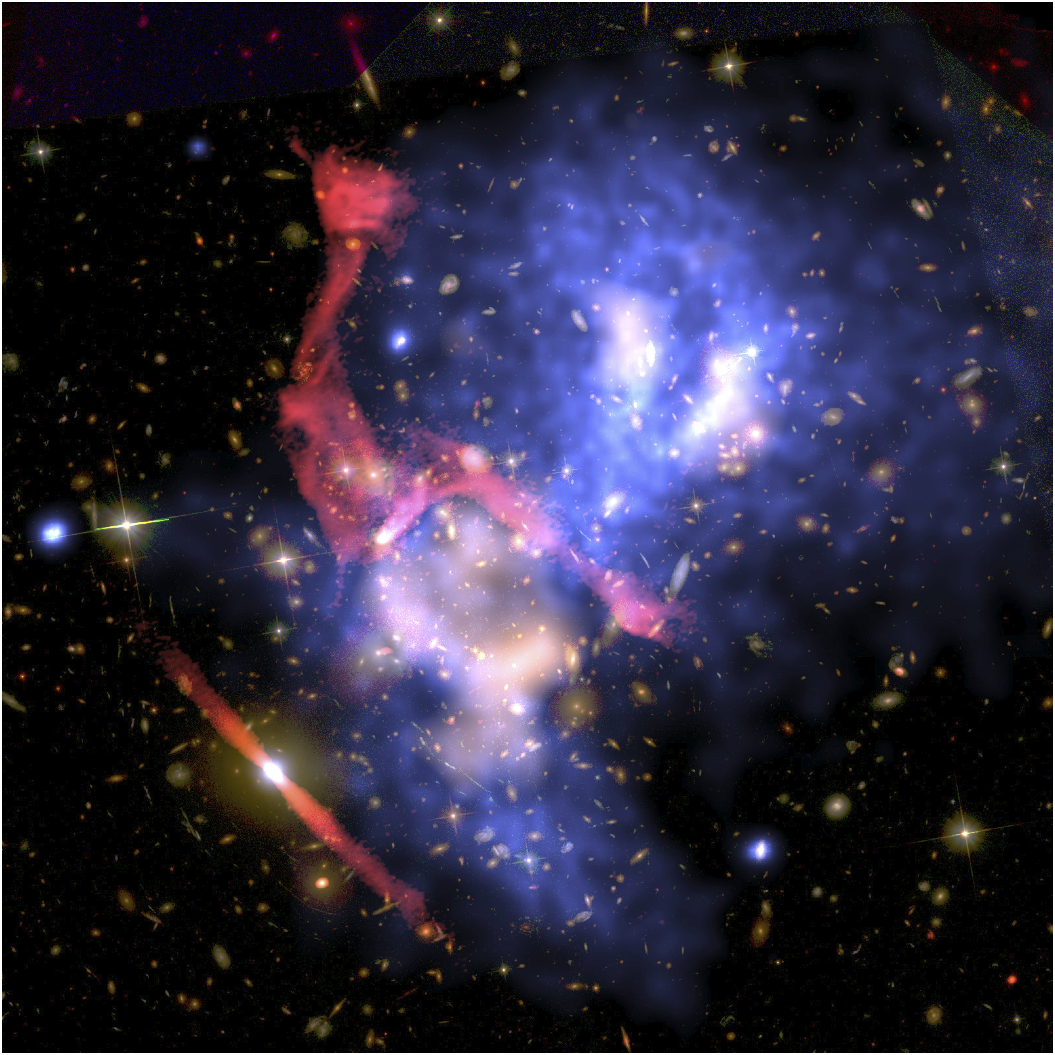Daily Image
31-03-2016Today's Colloquium: High Resolution Imaging of the Sunyaev-Zel'dovich Effect
| Submitter: | Tony Mroczkowski |
| Description: | Clusters of galaxies are among the largest gravitationally-bound objects in the Universe, and are found at the intersections of the large filamentary structure known as the Cosmic Web, which connects them to other clusters and superclusters. Clusters therefore trace the large-scale spatial distribution of dark matter, and can be used in cosmological tests that are independent from, and complementary to, other probes such as the cosmic microwave background (CMB), supernovae, and baryon acoustic oscillations (BAO). One tool now being used to find clusters at high redshift is the Sunyaev-Zel'dovich effect (SZE), which has redshift-independent surface brightness. To accurately extract cosmological parameters SZE observations, one must better understand how the SZ signature, which is due to thermal pressure, tracks dark matter (i.e. the gravitational potential). While X-ray imaging can infer deviations from thermal pressure support, high resolution SZ imaging -- achieved by a few instruments to date -- directly probes small scale pressure enhancements due to shocks and merger activity. I will present SZ imaging of a few massive high-redshift clusters with MUltiplexed SQUID/TES Array at Ninety GHz (MUSTANG), the Goddard IRAM Superconducting 2-Millimeter Observer (GISMO), and the Atacama Large Millimeter/Submm Array (ALMA). I will also discuss prospects for GISMO-2, MUSTANG-2, and upgrades to ALMA. Image: MACSJ0717.5+3745 is a massive (>1e15 Msun), merging cluster at z=0.55 with 5 identified subcluster components. The large peculiar velocity of one subcluster component in particular led to this being the first cluster in which resolved measurements of a non-zero kinetic SZ effect were possible using Bolocam 145 and 270 GHz imaging (see Mroczkowski et al. 2012; Sayers et al. 2013). The image shows MUSTANG SZ 90 GHz Decrement (peach, 9" resolution), Karl G. Jansky Very Large Array (VLA) S-Band (red, 2-4 GHz), and Chandra X-ray imaging (blue) overlaid on the deep, multi-band Hubble Space Telescope (HST) Frontier Fields (FF) imaging. Credit: R. J. van Weeren, produced for the FF and MUSTANG teams. |
| Copyright: | Tony Mroczkowski |
| Tweet |  |
